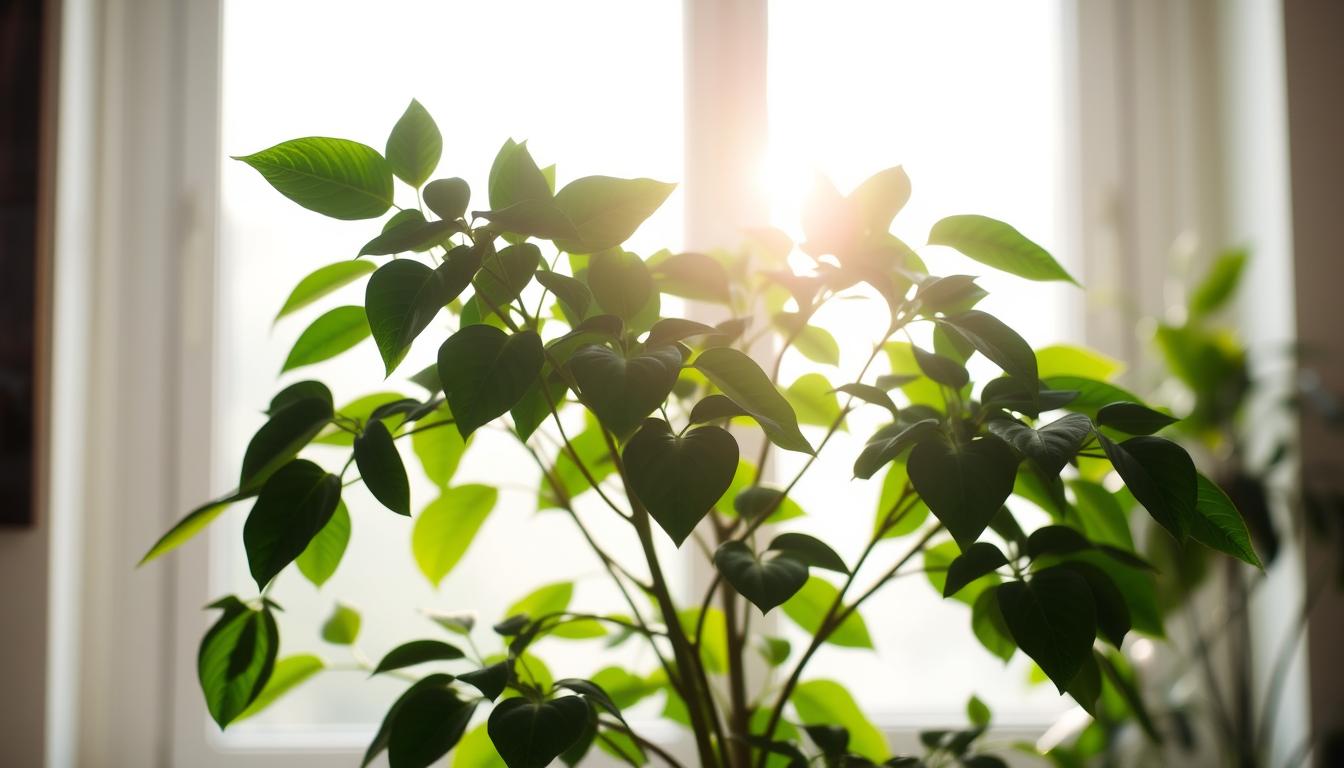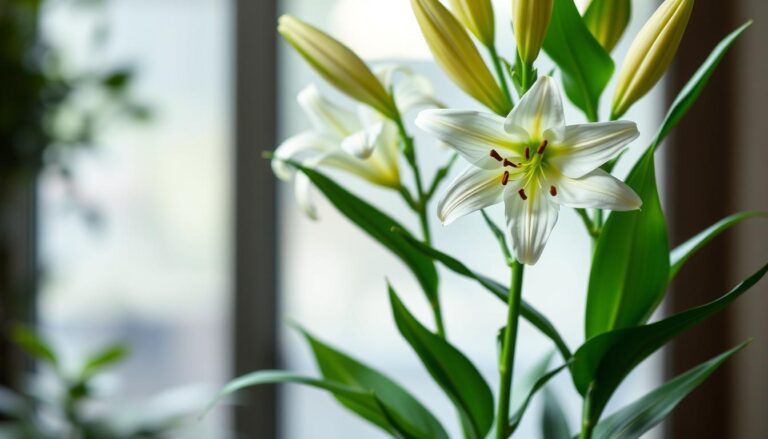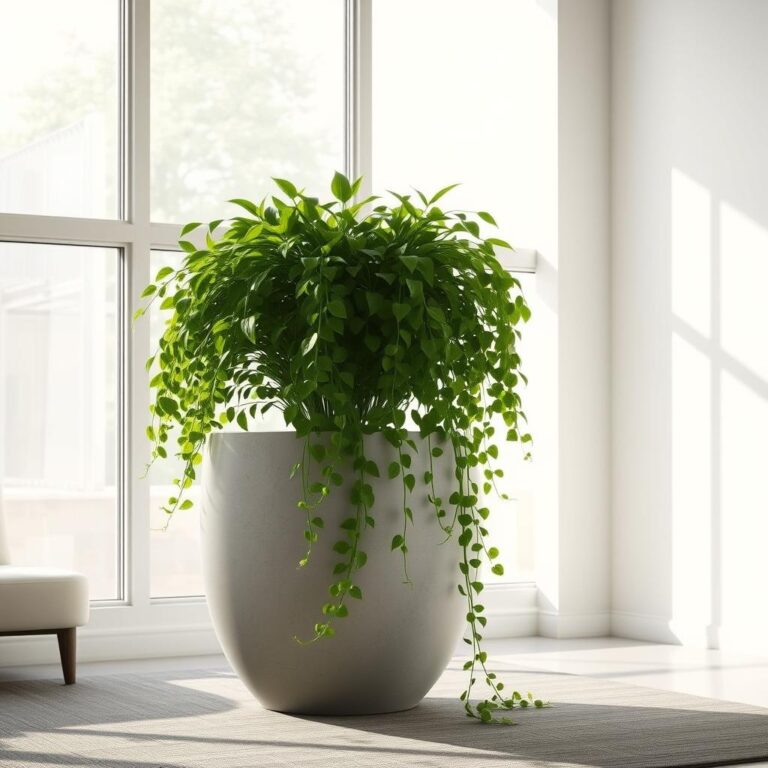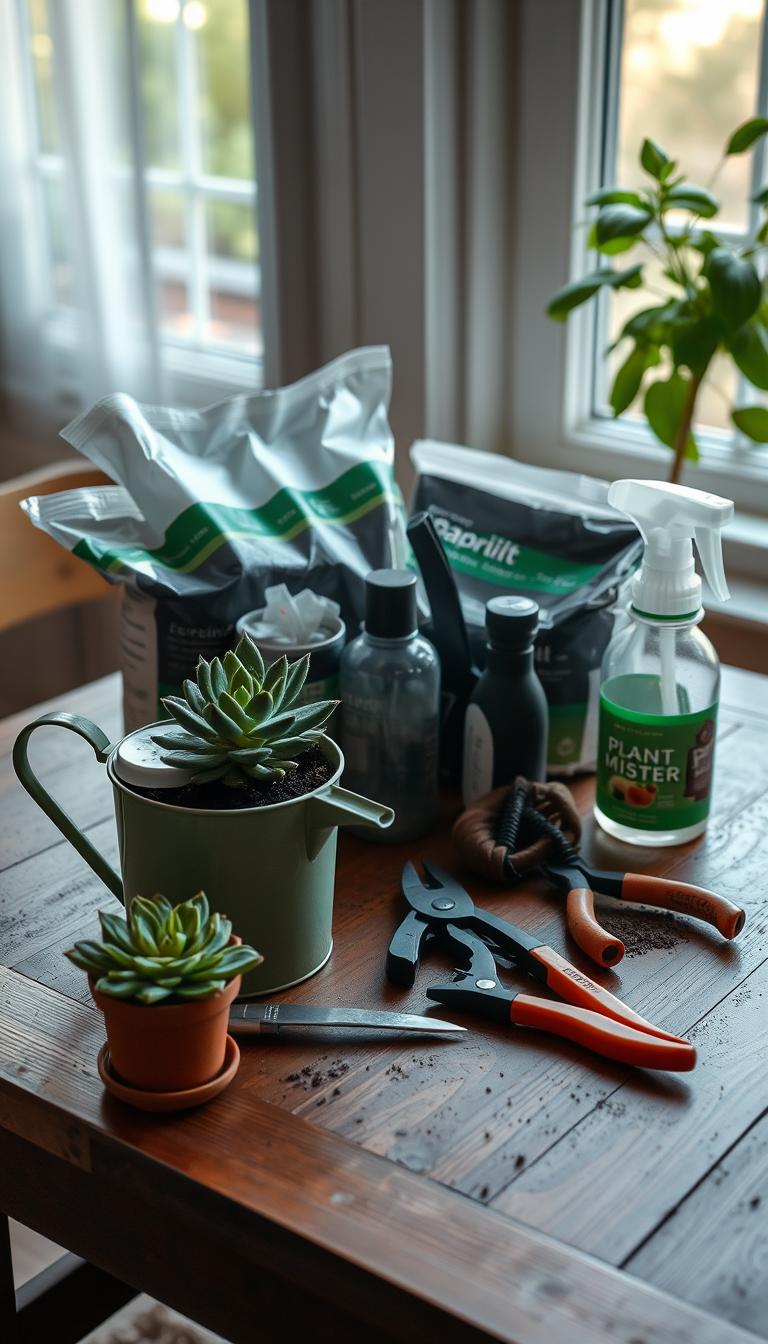The Ultimate Guide to Caring for Ficus Indoor Plants
Have you ever felt that quiet pride when your leafy companion thrives under your care? There’s something deeply rewarding about nurturing a living thing—watching it grow, adapt, and add life to your space. But let’s be honest: even the most dedicated plant lovers face moments of doubt. Why are the leaves turning yellow? Is it getting enough light? Am I watering too much or too little?
This guide is your answer to those questions. Whether you’re a first-time owner or a seasoned green thumb, you’ll find actionable steps to help your green friend flourish. We’ve distilled years of expert knowledge into one resource, covering everything from choosing the right soil to decoding seasonal changes. No jargon—just clear, practical advice.
You’ll learn how to identify different varieties, master watering routines, and tackle common challenges. We’ll also explore pruning techniques that encourage growth and share tips for stress-free repotting. By the end, you’ll feel confident creating a tailored care routine that keeps your foliage vibrant year-round.
Table of Contents
Introduction: Bringing Life to Your Indoor Greenery
The secret to a refreshed home environment might just lie in the graceful branches of a well-placed weeping fig. These leafy companions have surged in popularity, not just for their visual appeal but for their ability to purify your surroundings naturally. NASA research highlights their talent for removing formaldehyde and other toxins from the air, making them functional decor pieces.
Why Ficus Trees Are a Popular Choice
Ficus trees thrive where other greenery might struggle. Their glossy leaves act as natural air filters, silently working to improve your home’s atmosphere. Place them near a sunny window or in a cozy corner—they adapt effortlessly to different light conditions.
What sets these varieties apart? Three standout features:
- Low-effort care: They tolerate occasional missed waterings
- Design flexibility: Complement both modern and traditional spaces
- Year-round impact: Maintain vibrant foliage even in dry indoor climates
Their slender trunks and cascading leaves create instant focal points without demanding constant attention. As you’ll discover in later sections, mastering their basic needs unlocks their full potential—transforming your space into a healthier, more inviting retreat.
Exploring Different Ficus Varieties
How do you choose between a cascading canopy of slender leaves and bold, violin-shaped foliage? The answer lies in understanding each variety’s distinct personality. While all share the resilient nature of their family, their visual impact and care routines vary dramatically.
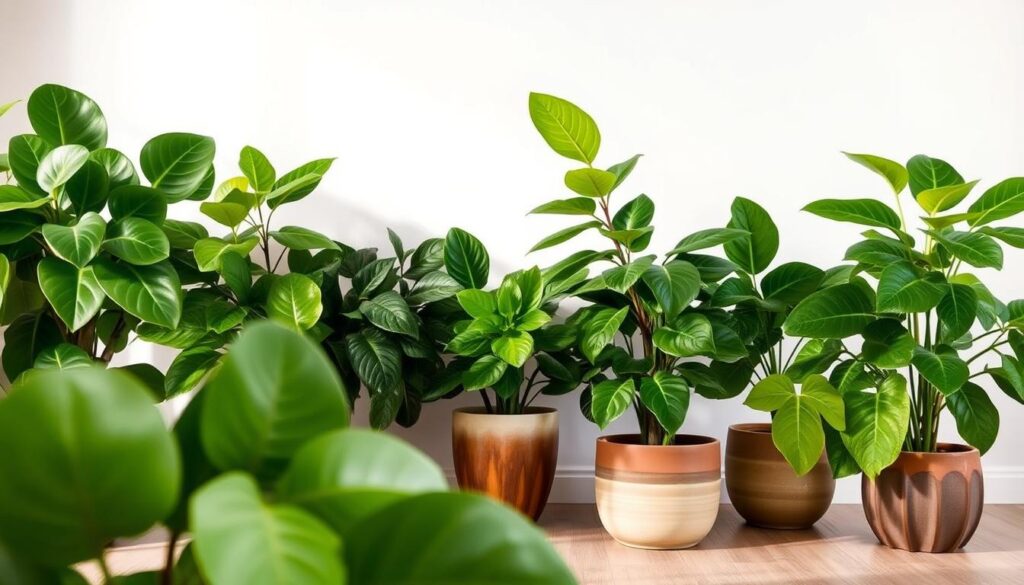
Spotlight on Ficus Benjamina
Often called the “weeping fig”, this cultivar stands out with its delicate, teardrop-shaped leaves. Its branches arch gracefully, reaching heights of 6-8 feet in containers. Unlike bulkier relatives, it thrives in moderate light and adapts well to pruning—perfect for shaping into elegant topiaries.
Three Standout Varieties Compared
Let’s break down key differences:
- Weeping Fig: Airy silhouette with small leaves; sensitive to drafts but forgives occasional dry soil
- Fiddle Leaf Fig: Broad, glossy leaves demand bright indirect light; grows vertically up to 10 feet
- Rubber Tree: Thick, waxy leaves in burgundy or green; tolerates lower light and infrequent watering
The weeping fig’s slender form suits tight spaces, while the rubber tree’s bold foliage makes it a natural room anchor. Fiddle leaf varieties become living sculptures but need consistent care.
“Each type tells a different design story—match their habits to your space’s rhythm.”
Essential Care Tips for Your Ficus Indoor Plant
Getting your leafy companion off to a strong start begins with three fundamentals: the right foundation, smart placement, and seasonal awareness. A proper setup prevents 80% of common issues according to horticulture studies, letting you focus on growth rather than damage control.
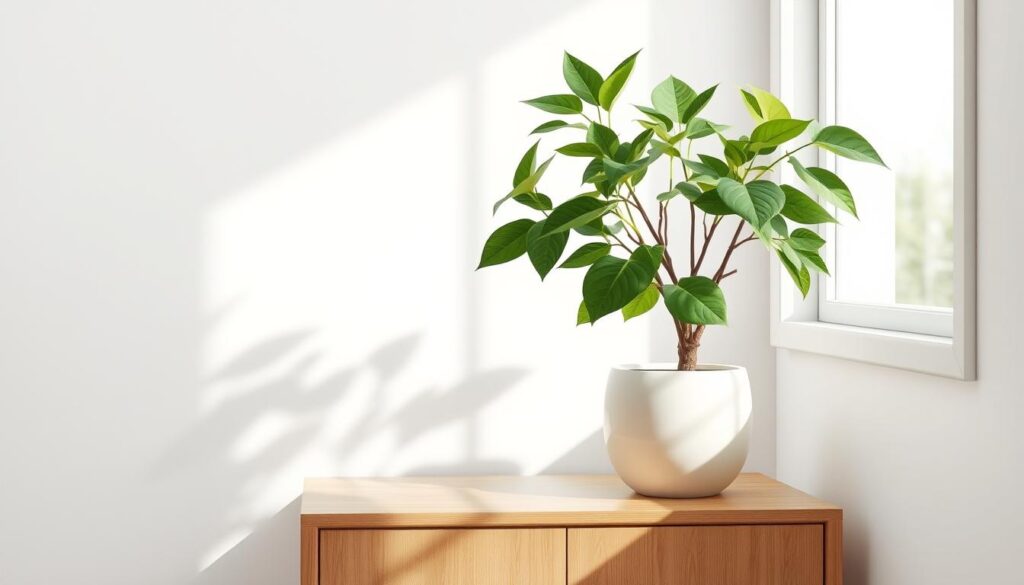
Starting Off: Key Requirements and Initial Setup
Choose containers with drainage holes—terra cotta breathes better than plastic. Mix two parts potting soil with one part perlite for optimal drainage. This combo prevents root rot while retaining enough moisture.
| Pot Type | Soil Component | Light Needs | Best For |
|---|---|---|---|
| Terra Cotta | 40% Potting Mix | Bright Indirect | Mature Plants |
| Plastic | 30% Perlite | Medium Light | Young Saplings |
| Ceramic | 20% Orchid Bark | Filtered Sun | Decorative Displays |
Position new arrivals in bright, indirect light for 2 weeks before moving them. This reduces shock from environmental changes. During the growing season (March-September), water when the top inch of soil feels dry.
Rotate the container weekly for even sun exposure. Use a moisture meter if unsure—overwatering causes more harm than underwatering. These steps create resilience against pests and leaf drop later.
Understanding Light, Water, and Humidity Requirements
Ever wonder why some greenery thrives while others barely survive? The answer often lies in balancing three environmental pillars. Proper management of these elements can transform struggling specimens into vibrant showpieces.
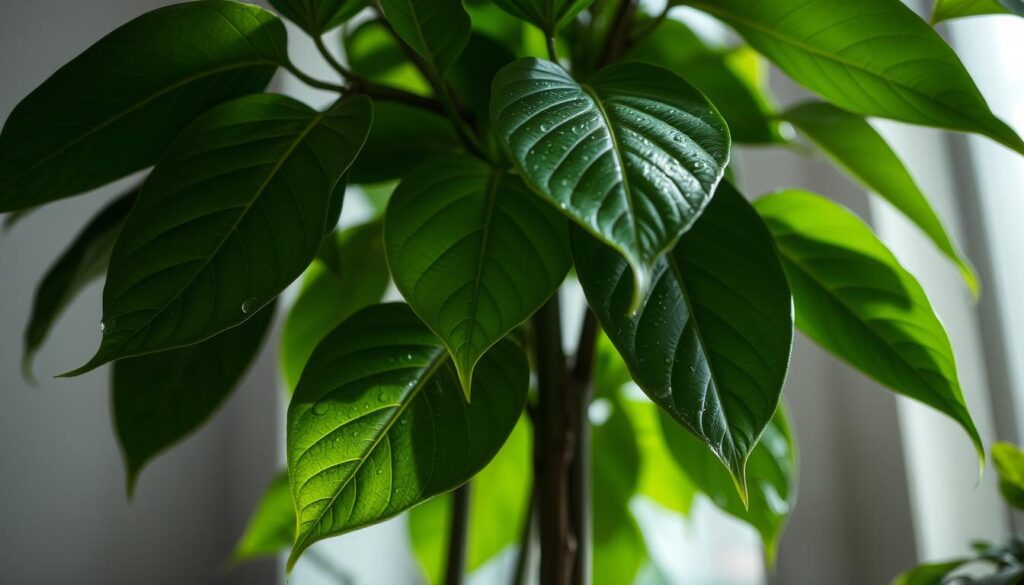
Best Lighting Conditions for Your Ficus
Bright, indirect light works like magic. Position your green companion near east-facing windows where morning sun filters through sheer curtains. Avoid harsh afternoon rays that scorch delicate leaves.
| Light Intensity | Water Frequency | Humidity Level |
|---|---|---|
| Bright Indirect | Weekly | 40-60% |
| Moderate | Every 10 Days | 30-50% |
| Low Light | Biweekly | 20-40% |
How to Achieve Ideal Moisture and Humidity Levels
Check soil moisture by pressing your finger an inch deep. Water only when dry—this prevents root rot. Use room-temperature water to avoid shocking delicate roots.
Boost humidity with these simple methods:
- Mist leaves every 3 days using distilled water
- Place bowls of water near heating vents
- Run a humidifier during winter months
Consistent routines prevent leaf drop. Horticulturist Dr. Ellen Parker notes: “Plants communicate through their foliage—crispy edges often signal thirsty air.”
Soil, Fertilizer, and Repotting Best Practices
What if the secret to lush growth lies beneath the surface? Your green companion’s vitality depends on three underground essentials: balanced nutrition, proper containment, and room to stretch its roots.
Selecting the Right Potting Mix and Drainage
Choose a well-draining potting soil blended with perlite or orchid bark. This combo prevents waterlogging while keeping roots hydrated. Avoid dense garden soil—it compacts easily, starving roots of oxygen.
| Mix Component | Purpose | Ideal Ratio |
|---|---|---|
| Potting Soil | Nutrient Base | 60% |
| Perlite | Aeration | 25% |
| Bark Chips | Drainage | 15% |
Fertilizer Needs and Nutrient Management
Feed monthly from spring to fall with a 10-10-10 liquid fertilizer. Dilute to half-strength to avoid salt buildup. Yellowing leaves often signal nutrient deficiency—boost magnesium with Epsom salt solutions (1 tsp per gallon).
When and How to Repot Your Ficus
Upgrade containers every 2-3 years when roots circle the pot’s base. Follow these steps:
- Water thoroughly 24 hours before
- Gently loosen root ball edges
- Place in new pot 2″ wider than previous
Pro tip: Repot in early spring when growth resumes. Trim damaged roots with sterilized shears, and always use fresh potting mix to replenish nutrients.
Pruning and Shaping Your Ficus for Optimal Growth
What transforms a lanky branch structure into a sculpted masterpiece? Strategic trimming does more than control size—it shapes your tree’s future. Proper techniques encourage denser foliage and prevent overcrowding, creating healthier specimens that thrive in your space.
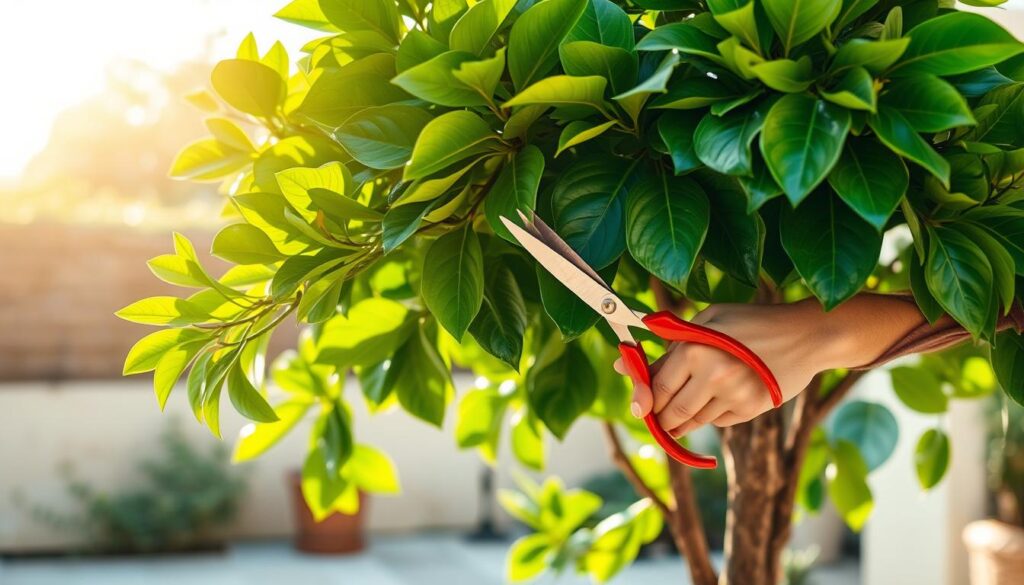
Mastering Precision Cutting
Use sharp bypass pruners for clean cuts that heal quickly. Sterilize blades with rubbing alcohol before each session to prevent disease spread. Focus on:
- Deadwood removal: Cut discolored branches at their base
- Directional pruning: Trim above outward-facing leaf nodes to guide new growth
- Thinning: Remove 20% of inner stems annually for better air circulation
Arborist Mia Torres advises: “Trim during spring or early summer when sap flow peaks—this speeds recovery and reduces stress.”
Designing Living Art
Turn functional maintenance into creative expression. Try these approaches:
- Train multiple trunks into braided patterns using soft plant ties
- Create cloud-pruned tops by trimming outer foliage into rounded shapes
- Encourage horizontal spread by pinching vertical shoots
Rotate your tree weekly to ensure even light exposure. For formal styles, trim every 6-8 weeks during active growth phases. Casual shapes need touch-ups every 3 months.
Preventing and Managing Pests & Diseases
Imagine discovering tiny webs beneath the leaves of your favorite houseplant—a silent invasion threatening its health. Early detection separates thriving greenery from struggling specimens. Let’s arm you with solutions to protect your leafy investments.
Spotting Trouble Before It Spreads
Common invaders leave distinct calling cards. Aphids cluster on new growth, leaving sticky honeydew. Spider mites create fine webbing between branches. Scale insects resemble brown bumps on stems. Check leaf undersides weekly—early signs include yellow speckles or sudden leaf drop.
Nature’s Defense Toolkit
Combat infestations without harsh chemicals:
- Neem oil spray: Mix 2 tsp with 1 quart water; apply every 7 days
- Insecticidal soap: Target visible pests with cotton swabs dipped in solution
- Root rescue: For suspected root rot, trim dark/mushy roots and repot in fresh soil
Preventative care matters most. Improve air circulation around your weeping fig tree and avoid wetting leaves during watering. Quarantine new plants for 2 weeks before introducing them to your collection.
“Consistency beats crisis management—weekly inspections catch 90% of issues before they escalate.”
Maintain drainage holes in pots to protect roots from waterlogging. If diseases strike, remove affected foliage immediately. Healthy specimens rebound faster, so stick to your care routine even during treatment.
Seasonal Care: Navigating the Growing Season and Repotting Times
Your green companion’s needs shift like the weather. Understanding these seasonal rhythms helps maintain year-round vitality. Let’s explore how to adapt your approach as temperatures and daylight hours change.
Growing Season vs. Dormant Periods
From March to September, increased sunlight triggers active growth. Water more frequently—check soil moisture every 5 days. Fertilize monthly with balanced nutrients to support new leaves and stems.
| Season | Water Frequency | Light Adjustment | Key Tasks |
|---|---|---|---|
| Spring/Summer | Every 5-7 days | Rotate for even exposure | Fertilize, prune, repot |
| Fall | Every 10-14 days | Move closer to windows | Reduce feeding, pest checks |
| Winter | Every 2-3 weeks | Use grow lights if needed | Humidity control, no repotting |
Winter demands careful balancing. Reduce watering when growth slows, but boost humidity with pebble trays or misting. Keep temperatures above 60°F to prevent leaf drop.
Repotting works best in early spring as roots awaken. Choose a container 2 inches wider if roots circle tightly. Refresh soil with fresh mix containing perlite for drainage. This timing minimizes stress and aligns with natural growth spurts.
“Plants read seasons better than calendars—watch for new buds to time your care shifts.”
Combat dry air in heated rooms by grouping plants together. Wipe leaves monthly to maximize light absorption during shorter days. These adjustments help your leafy friend thrive through every season.
Conclusion
Your journey to lush greenery starts with mastering a few core principles. By balancing light exposure, watering routines, and humidity levels, you create an environment where houseplants flourish. Remember: well-draining soil prevents root rot, while seasonal pruning encourages vibrant growth.
Each variety—from the elegant weeping fig to bold fiddle leaf types—has unique needs. Adjust care based on their natural habits. Repot every 2-3 years using fresh potting mix, and stay vigilant against pests with regular inspections.
Apply these strategies consistently. Rotate pots for even sun distribution, fertilize during active months, and tweak care as seasons change. Your efforts will reward you with thriving trees that purify air and elevate your space.
Bookmark this guide for quick reference. Whether troubleshooting yellow leaves or planning your next repotting project, you’re now equipped to nurture healthy, long-lasting greenery.

